Evaluating Social Impact of Smart City Technologies and Services: Methods, Challenges, Future Directions
Abstract
1. Introduction
- What is considered “social impact” in smart cities?
- How are social impacts currently reflected in smart city frameworks? What are the strengths and weaknesses of the evaluation methods and indicators being used?
- What new perspectives are emerging on social impact in research-led, smart city projects and how could that impact be evaluated?
2. Social Impact and the Evaluation of Smart Cities
2.1. Social Impact
2.1.1. Social Impact Assessment
“Social impact assessment is the process of analysing (predicting, evaluating and reflecting) and managing the intended and unintended consequences on the human environment of planned interventions (policies, programs, plans, projects) and any social change processes invoked by those interventions so as to bring about a more sustainable and equitable biophysical and human environment”.[6] (p. 190)
2.1.2. Smart City Context
2.2. Social Impact in Smart City Frameworks
2.2.1. Current Frameworks Including Social Factors
2.2.2. Social Sustainability
2.2.3. Two Challenges in Evaluating Social Impact
3. Methodology
3.1. Data Identification
3.2. Data Analysis
3.3. Data Summary
4. Findings
4.1. Approaches to Smart City Research
4.1.1. Living Labs (Projects A–C)
4.1.2. City–Public Interfaces (Projects D–F)
4.1.3. Forecasting (Projects G–H)
4.2. How “Social” Is Addressed—Perspectives from Smart City Projects
4.2.1. Human- and Eco-Centred
4.2.2. Inclusion, Participation and Empowerment
4.2.3. New Roles for Citizens and Their Data
4.2.4. Connections between Impact, Social and Environmental Sustainability
4.3. How “Social” Is Assessed—Approaches to Evaluation in Smart City Projects
4.3.1. Evaluating Design and Development Processes
4.3.2. Qualitative Indicators and the Tensions between Strategic Goals, Project Outcomes and Impacts
4.3.3. Quantitative Indicators and Inadequate Representation of Social Impacts
5. Discussion
5.1. A Definition of Social Impact in Smart Cities
5.2. Opportunities for Evaluating Social Impact in Smart Cities
5.3. Criteria for Social Impact Evaluation in Smart Cities
- Recognises the diversity of stakeholders (human and non-human) and power dynamics involved, paying special attention to those mediated through technology and those represented by government and corporate interests.
- Accounts for different understandings and experiences of social impact beyond existing smart city indicators and strategic priorities.
- Is explicit about how “social” is defined in smart city initiatives and how its impacts can be observed.
- Makes apparent the links between social and environmental sustainability.
- Assesses project development processes and their values (e.g., community engagement, inclusion, living lab principles).
- Accounts for complexity, including the relationships between local and wider project contexts (e.g., city strategies, regional ecosystems).
- Is focused, measurable and appropriate to the scale of the project and to the resources and capacity of the evaluators.
- Uses qualitative and quantitative measures when relevant, rather than trying to adapt strategic goals, reporting requirements and broad smart city frameworks to individual projects.
- Reports on impact in ways that are meaningful to stakeholders beyond governments, funders and other decision makers.
5.4. Approaches to Social Impact in Smart City Projects
- Absent. Social impact is not considered in the project or evaluation.
- Part of the aims but not the evaluation. Social impact is part of general project aims, but there are no social impact indicators or evaluation.
- Part of the aims and part of the evaluation. Social impact is part of general project aims, and social impact indicators and evaluation methods are used for some aspects.
- A natural part of the evaluation. Social impact is evaluated for all aspects no matter what the project aims are.
- The main aim of the project or process and the evaluation. Social impact is the main goal of the entire project (i.e., over technological, economic, environmental aims).
6. Conclusions
Author Contributions
Funding
Institutional Review Board Statement
Informed Consent Statement
Data Availability Statement
Acknowledgments
Conflicts of Interest
Appendix A
Appendix A.1. Project A: Solid Waste Management, Finland
Appendix A.2. Project B: SuMIn—Sustainability Means Inclusivity, Sweden
Appendix A.3. Project C: SimpliCITY, Austria & Sweden
Appendix A.4. Project D: Smart Kalasatama and the Oodi Central Library, Finland
Appendix A.5. Project E: The Building City Dashboards (BCD) Project, Ireland
Appendix A.6. Project F: Citizen Voices in Cities Dashboard, Australia
Appendix A.7. Project G: Roosevelt Island’s Digital Twin for Social Impact, USA
Appendix A.8. Project H: Greensight: Scale-Up Perspectives in Urban Green for Human Centered and Liveable Urban Cores, Finland
References
- European Network of Living Labs About Us. Available online: https://enoll.org/about-us/ (accessed on 23 February 2023).
- Trencher, G. Towards the Smart City 2.0: Empirical Evidence of Using Smartness as a Tool for Tackling Social Challenges. Technol. Forecast. Soc. Chang. 2019, 142, 117–128. [Google Scholar] [CrossRef]
- Paskaleva, K.; Evans, J.; Watson, K. Co-Producing Smart Cities: A Quadruple Helix Approach to Assessment. Eur. Urban Reg. Stud. 2021, 28, 395–412. [Google Scholar] [CrossRef]
- Beretta, I. The Social Effects of Eco-Innovations in Italian Smart Cities. Cities 2018, 72, 115–121. [Google Scholar] [CrossRef]
- Gupta, P.; Chauhan, S.; Jaiswal, M.P. Classification of Smart City Research—A Descriptive Literature Review and Future Research Agenda. Inf. Syst. Front. 2019, 21, 661–685. [Google Scholar] [CrossRef]
- Vanclay, F. Conceptualising Social Impacts. Environ. Impact Assess. Rev. 2002, 22, 183–211. [Google Scholar] [CrossRef]
- Richards, A.; Nicholls, J. A Discussion Document on the Valuation of Social Outcomes; Social Value International and World Business Council for Sustainable Development: Liverpool, UK; Geneva, Switzerland, 2015. [Google Scholar]
- Slootweg, R.; Vanclay, F.; van Schooten, M. Function Evaluation as a Framework for the Integration of Social and Environmental Impact Assessment. Impact Assess. Proj. Apprais. 2001, 19, 19–28. [Google Scholar] [CrossRef]
- Vanclay, F. Reflections on Social Impact Assessment in the 21st Century. Impact Assess. Proj. Apprais. 2020, 38, 126–131. [Google Scholar] [CrossRef]
- Díaz-Díaz, R.; Muñoz, L.; Pérez-González, D. Business Model Analysis of Public Services Operating in the Smart City Ecosystem: The Case of Smart Santander. Future Gener. Comput. Syst. 2017, 76, 198–214. [Google Scholar] [CrossRef]
- Trivellato, B. How Can ‘Smart’ Also Be Socially Sustainable? Insights from the Case of Milan. Eur. Urban Reg. Stud. 2017, 24, 337–351. [Google Scholar] [CrossRef]
- Ntafalias, A.; Papadopoulos, G.; Papadopoulos, P.; Huovila, A. A Comprehensive Methodology for Assessing the Impact of Smart City Interventions: Evidence from Espoo Transformation Process. Smart Cities 2022, 5, 90–107. [Google Scholar] [CrossRef]
- OECD. Development Assistance Committee Working Party on Aid Evaluation; Glossary of key terms in evaluation and results based management; OECD Publications: Paris, France, 2002. [Google Scholar]
- Design Council Moving Beyond Financial Value: How Might We Capture Social and Environmental Value of Design? Design Council: London, UK, 2020.
- Batty, M.; Axhausen, K.; Giannotti, F.; Pozdnoukhov, A.; Bazzani, A.; Wachowicz, M.; Ouzounis, G.; Portugali, Y. Smart Cities of the Future. Eur. Phys. J. Spec. Top. 2012, 214, 481–518. [Google Scholar] [CrossRef]
- Townsend, A. Smart Cities: Big Data, Civic Hackers, and the Quest for a New Utopia; W.W. Norton & Company: New York, NY, USA, 2013. [Google Scholar]
- Kitchin, R. The Real-Time City? Big Data and Smart Urbanism. GeoJournal 2014, 79, 1–14. [Google Scholar] [CrossRef]
- Schaffers, H.; Komninos, N.; Pallot, M.; Aguas, M.; Almirall, E.; Bakici, T.; Barroca, J.; Carter, D.; Corriou, M.; Fernadez, J.; et al. Smart Cities as Innovation Ecosystems Sustained by the Future Internet; HAL Open Science: Lyon, France, 2012; p. 65. Available online: https://hal.inria.fr/hal-00769635/document (accessed on 31 January 2023).
- Cugurullo, F. Urban Artificial Intelligence: From Automation to Autonomy in the Smart City. Front. Sustain. Cities 2020, 2, 38. [Google Scholar] [CrossRef]
- Camero, A.; Alba, E. Smart City and Information Technology: A Review. Cities 2019, 93, 84–94. [Google Scholar] [CrossRef]
- Bakıcı, T.; Almirall, E.; Wareham, J. A Smart City Initiative: The Case of Barcelona. J. Knowl. Econ. 2012, 4, 135–148. [Google Scholar] [CrossRef]
- Sharifi, A. A Typology of Smart City Assessment Tools and Indicator Sets. Sustain. Cities Soc. 2020, 53, 101936. [Google Scholar] [CrossRef]
- OECD. How’s Life?: Measuring Well-Being; How’s Life? OECD: Paris, France, 2011; ISBN 978-92-64-11161-5. [Google Scholar]
- Available online: https://www.merriam-webster.com/dictionary (accessed on 6 July 2021).
- Akande, A.; Cabral, P.; Gomes, P.; Casteleyn, S. The Lisbon Ranking for Smart Sustainable Cities in Europe. Sustain. Cities Soc. 2019, 44, 475–487. [Google Scholar] [CrossRef]
- European Union Digital Economy and Society Index. European Union. 2020. Available online: https://digital-strategy.ec.europa.eu/en/policies/desi (accessed on 1 June 2021).
- European Commission EU Regional Social Progress Index. Available online: https://eu-spi.eu/rationale (accessed on 6 July 2021).
- Kourtit, K.; Nijkamp, P.; Arribas, D. Smart Cities in Perspective—A Comparative European Study by Means of Self-Organizing Maps. Innov. Eur. J. Soc. Sci. Res. 2012, 25, 229–246. [Google Scholar] [CrossRef]
- Giffinger, R.; Fertner, C.; Kramar, H.; Kalasek, R.; Pichler-Milanovich, N.; Meijers, E. European Smart Cities—Ranking. Available online: https://www.smart-cities.eu/ranking.html (accessed on 23 February 2023).
- Dixon, T. Putting the S Word in Sustainability—Can We Be More Social? Berkeley Group: Surrey, UK, 2011. [Google Scholar] [CrossRef]
- Colantonio, A.; Dixon, T. Measuring Socially Sustainable Urban Regeneration in Europe; Oxford Brookes University: Oxford, UK, 2009; Available online: http://oisd.brookes.ac.uk/sustainable_communities/resources/Social_Sustainability_and_Urban_Regeneration_report.pdf (accessed on 31 January 2023).
- Timeus, K.; Vinaixa, J.; Pardo-Bosch, F. Creating Business Models for Smart Cities: A Practical Framework. Public Manag. Rev. 2020, 22, 726–745. [Google Scholar] [CrossRef]
- Bremer, O.; Kinnunen, N.; Koponen, J.; Laurila, L.; Leppänen, J.; Malho, M.; Mokka, R.; Suikkanen, H. People First: A Vision for the Global Urban Age; Demos Helsinki: Helsinki, Finland, 2020. [Google Scholar]
- Bouzguenda, I.; Alalouch, C.; Fava, N. Towards Smart Sustainable Cities: A Review of the Role Digital Citizen Participation Could Play in Advancing Social Sustainability. Sustain. Cities Soc. 2019, 50, 101627. [Google Scholar] [CrossRef]
- Orejon-Sanchez, R.D.; Crespo-Garcia, D.; Andres-Diaz, J.R.; Gago-Calderon, A. Smart Cities’ Development in Spain: A Comparison of Technical and Social Indicators with Reference to European Cities. Sustain. Cities Soc. 2022, 81, 103828. [Google Scholar] [CrossRef]
- Cugurullo, F.; Acheampong, R.A.; Gueriau, M.; Dusparic, I. The Transition to Autonomous Cars, the Redesign of Cities and the Future of Urban Sustainability. Urban Geogr. 2021, 42, 833–859. [Google Scholar] [CrossRef]
- Duarte, F.; Ratti, C. The Impact of Autonomous Vehicles on Cities: A Review. J. Urban Technol. 2018, 25, 3–18. [Google Scholar] [CrossRef]
- Jones, A.M.; Wilenius, M. In Greensight: Healthier Futures for Urban Cores in Transition. Cities Health 2020, 4, 168–179. [Google Scholar] [CrossRef]
- Cugurullo, F.; Acheampong, R.A. Fear of AI: An Inquiry into the Adoption of Autonomous Cars in Spite of Fear, and a Theoretical Framework for the Study of Artificial Intelligence Technology Acceptance. AI Soc. 2023. [Google Scholar] [CrossRef]
- Li, J.; Huang, J.-S. Dimensions of Artificial Intelligence Anxiety Based on the Integrated Fear Acquisition Theory. Technol. Soc. 2020, 63, 101410. [Google Scholar] [CrossRef]
- Haugland, B.T.; Skjølsvold, T.M. Promise of the Obsolete: Expectations for and Experiments with Self-Driving Vehicles in Norway. Sustain. Sci. Pract. Policy 2020, 16, 37–47. [Google Scholar] [CrossRef]
- Capra, C.F. The Smart City and its Citizens: Governance and Citizen Participation in Amsterdam Smart City. Int. J. E-Plan. Res. 2016, 5, 20–38. [Google Scholar] [CrossRef]
- Cardullo, P.; Kitchin, R. Smart Urbanism and Smart Citizenship: The Neoliberal Logic of ‘Citizen-Focused’ Smart Cities in Europe. Environ. Plan. C Polit. Space 2019, 37, 813–830. [Google Scholar] [CrossRef]
- Hodson, E.; Sayún, M.N.; Vainio, T. Decoding the Smart City. In Proceedings of the NordiCHI 2020—11th Nordic Conference on Human-Computer Interaction: Shaping Experiences, Shaping Society, Tallinn, Estonia, 26 October 2020; ACM: Rochester, NY, USA, 2020; pp. 1–3. [Google Scholar]
- Braun, V.; Clarke, V. Using Thematic Analysis in Psychology. Qual. Res. Psychol. 2006, 3, 77–101. [Google Scholar] [CrossRef]
- Vanclay, F. International Principles For Social Impact Assessment. Impact Assess. Proj. Apprais. 2003, 21, 5–12. [Google Scholar] [CrossRef]
- European Network of Living Labs (ENoLL) What Are Living Labs. Available online: http://enoll.org/about-us/ (accessed on 30 June 2021).
- European Commission Technical Guidance on the Application of “Do No Significant Harm” under the Recovery and Resilience Facility Regulation. European Commission. 2021. Available online: https://eur-lex.europa.eu/legal-content/EN/TXT/?uri=CELEX%3A52021XC0218%2801%29 (accessed on 31 January 2023).
- Gibson, E.G. Working with the Performance Approach in Building; International Council for Research and Innovation in Building and Construction: Rotterdam, The Netherlands, 1982. [Google Scholar]
- Ben Letaifa, S. How to Strategize Smart Cities: Revealing the SMART Model. J. Bus. Res. 2015, 68, 1414–1419. [Google Scholar] [CrossRef]
- European Commission. Directorate General for Energy; The Institute for Technology Assessment and Systems Analysis (ITAS). Energy Solutions for Smart Cities and Communities: Recommendations for Policy Makers from the 58 Pilots of the CONCERTO Initiative; Publications Office: Luxembourg, 2014. [Google Scholar]
- Garrick, J.; Chan, A. Knowledge Management and Professional Experience: The Uneasy Dynamics between Tacit Knowledge and Performativity in Organizations. J. Knowl. Manag. 2017, 21, 872–884. [Google Scholar] [CrossRef]
- Wolff, A.; Seffah, A.; Barker, M.; Hudson, L. Supporting Smart Citizens: Design Templates for Co-Designing Data-Intensive Technologies. Cities 2020, 101, 102695. [Google Scholar] [CrossRef]
- Harrison, K.; Borutecene, A.; Lowgren, J.; Enlund, D.; Ringdahl, R.; Angelakis, V. Sustainability Means Inclusivity: Engaging Citizens in Early Stage Smart City Development. In Proceedings of the 2020 IEEE International Symposium on Technology and Society (ISTAS), Tempe, AZ, USA, 12 November 2020; IEEE: Tempe, AZ, USA, 2020; pp. 413–416. [Google Scholar]
- Ryan, C.; Gaziulusoy, İ.; McCormick, K.; Trudgeon, M. Virtual City Experimentation: A Critical Role for Design Visioning. In The Experimental City; Routledge: Oxford, UK, 2016. [Google Scholar]
- Paraschivoiu, I.; Layer-Wagner, T.; Meschtscherjakov, A.; Stabauer, P. A Multi-Stakeholder Process of Designing a City Platform for Sustainable Behavior: Lessons Learned. In CEUR Workshop Proceedings. 2020. Available online: https://eplus.unisalzburg.at/obvusboa/content/titleinfo/5468238/full.pdf (accessed on 31 January 2023).
- City of Helsinki. The Most Functional City in the World. Helsinki City Strategy 2017–2021; City of Helsinki: Helsinki, Finland, 2017. [Google Scholar]
- Mora, L.; Deakin, M.; Reid, A. Strategic Principles for Smart City Development: A Multiple Case Study Analysis of European Best Practices. Technol. Forecast. Soc. Chang. 2019, 142, 70–97. [Google Scholar] [CrossRef]
- Hyysalo, S.; Hyysalo, V.; Hakkarainen, L. The Work of Democratized Design in Setting-up a Hosted Citizen-Designer Community. Int. J. Dsign 2019, 13, 69–82. [Google Scholar]
- Csukás, M.S.; Szabó, R.Z. The Many Faces of the Smart City: Differing Value Propositions in the Activity Portfolios of Nine Cities. Cities 2021, 112, 103116. [Google Scholar] [CrossRef]
- Kitchin, R.; McArdle, G. Urban Data and City Dashboards: Six Key Issues. In Data and the City; Routledge: London, UK, 2017. [Google Scholar]
- Young, G.W.; Kitchin, R. Creating Design Guidelines for Building City Dashboards from a User’s Perspectives. Int. J. Hum.-Comput. Stud. 2020, 140, 102429. [Google Scholar] [CrossRef]
- Young, G.W.; Kitchin, R.; Naji, J. Building City Dashboards for Different Types of Users. J. Urban Technol. 2020, 28, 289–309. [Google Scholar] [CrossRef]
- Alizadeh, T.; Sarkar, S.; Burgoyne, S. Capturing Citizen Voice Online: Enabling Smart Participatory Local Government. Cities 2019, 95, 102400. [Google Scholar] [CrossRef]
- Fredericks, J.; Tomitsch, M.; Haeusler, M.H. Redefining Community Engagement in Smart Cities: Design Patterns for a Smart Engagement Ecosystem. In Citizen-Responsive Urban E-Planning: Recent Developments and Critical Perspectives; IGI Global: Hershey, PA, USA, 2020; pp. 13–53. ISBN 9781799840183. [Google Scholar]
- Anderson The Federal Bulldozer: A Critical Analysis of Urban Renewal 1949–1962; Massachusetts Institute of Technology: Cambridge, UK, 1964.
- Gans, H.J. The Failure of Urban Renewal. Commentary 1965, 39, 29. [Google Scholar]
- EIFER European Institute for Energy Research Lighthouse Cities. Available online: https://h2020response.eu/cities-of-focus/lighthouse-cities/ (accessed on 7 July 2021).
- Pouru, L.; Wilenius, M.; Holstius, K.; Heinonen, S. Pentti Malaska–A Visionary and Forerunner; future series 9; The Finnish Society for Future Studies: Turku, Finland, 2018. [Google Scholar]
- Alvarez-Pereira, C. Towards a society of living: Provocations on economy and economics by layman and entrepreneur. e-J. World Acad. Art Sci. 2016, 2, 72–101. [Google Scholar]

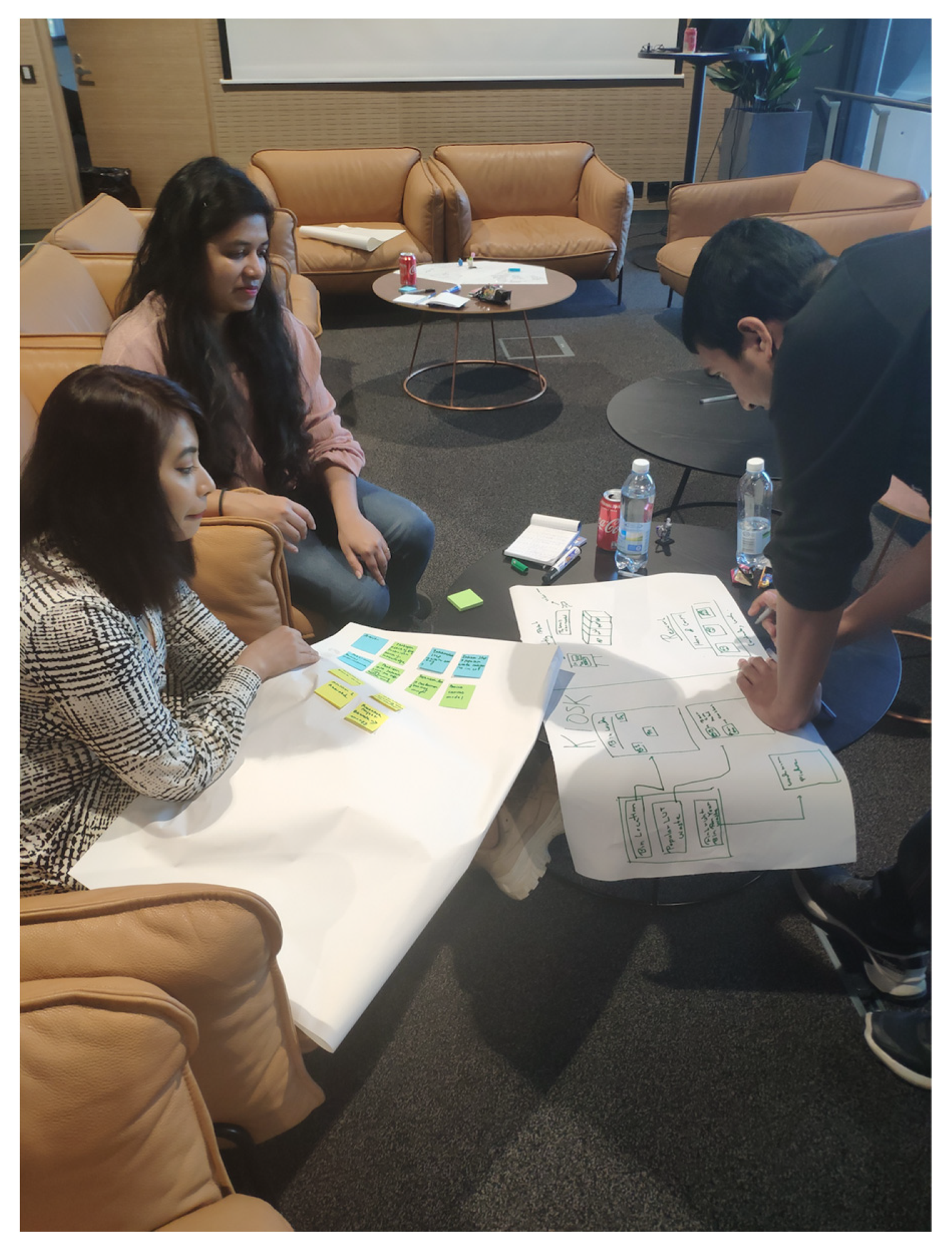

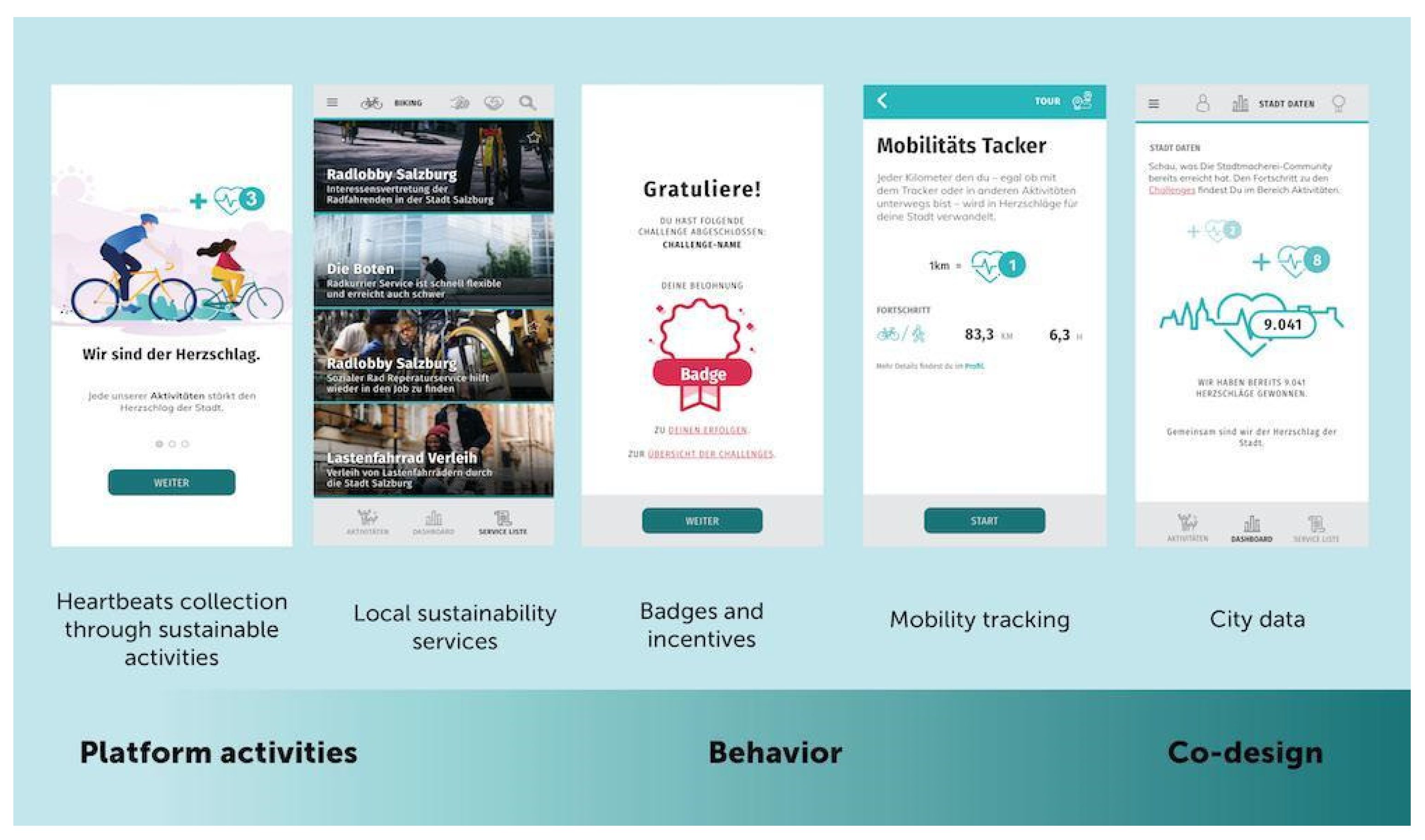
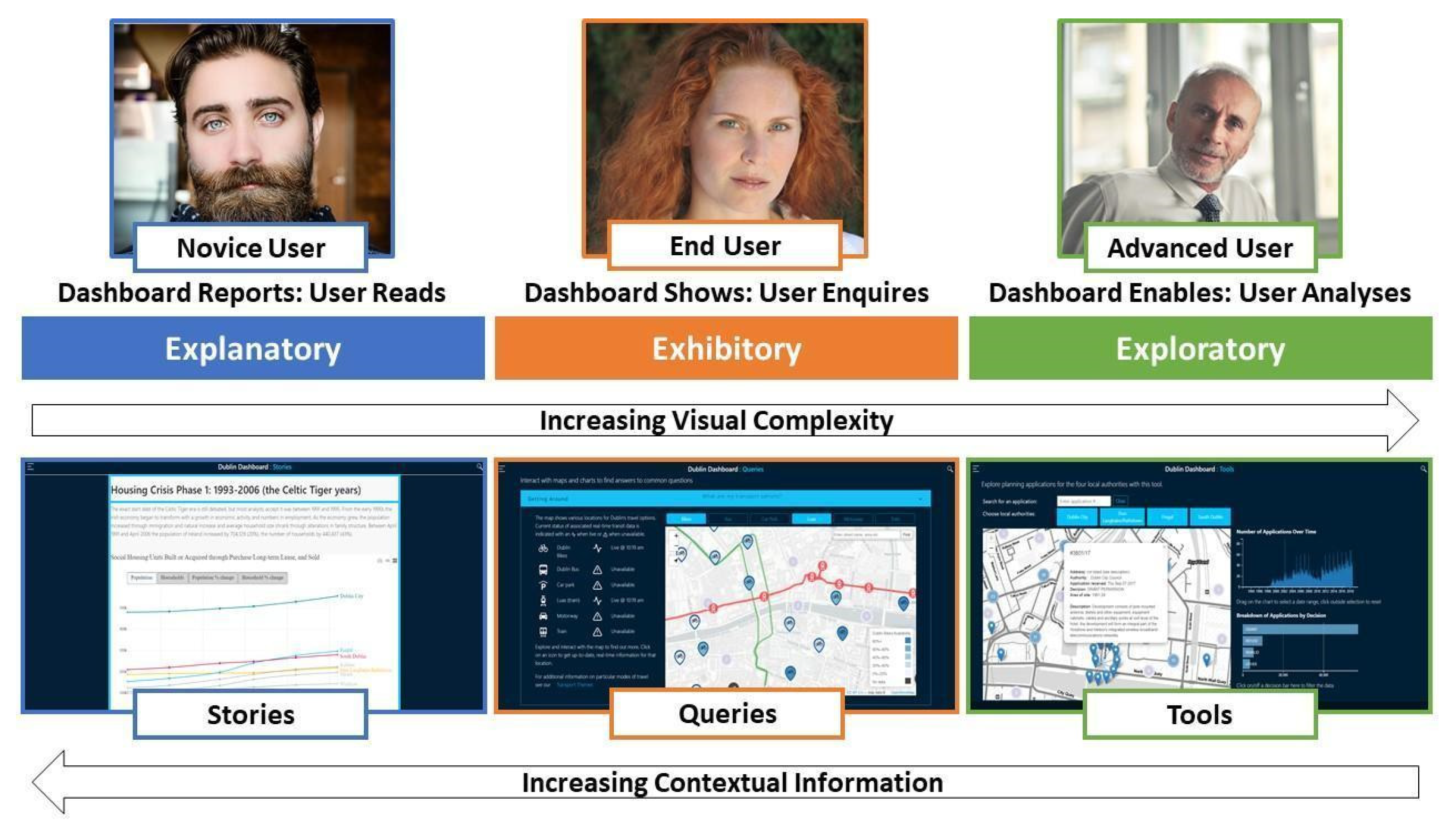
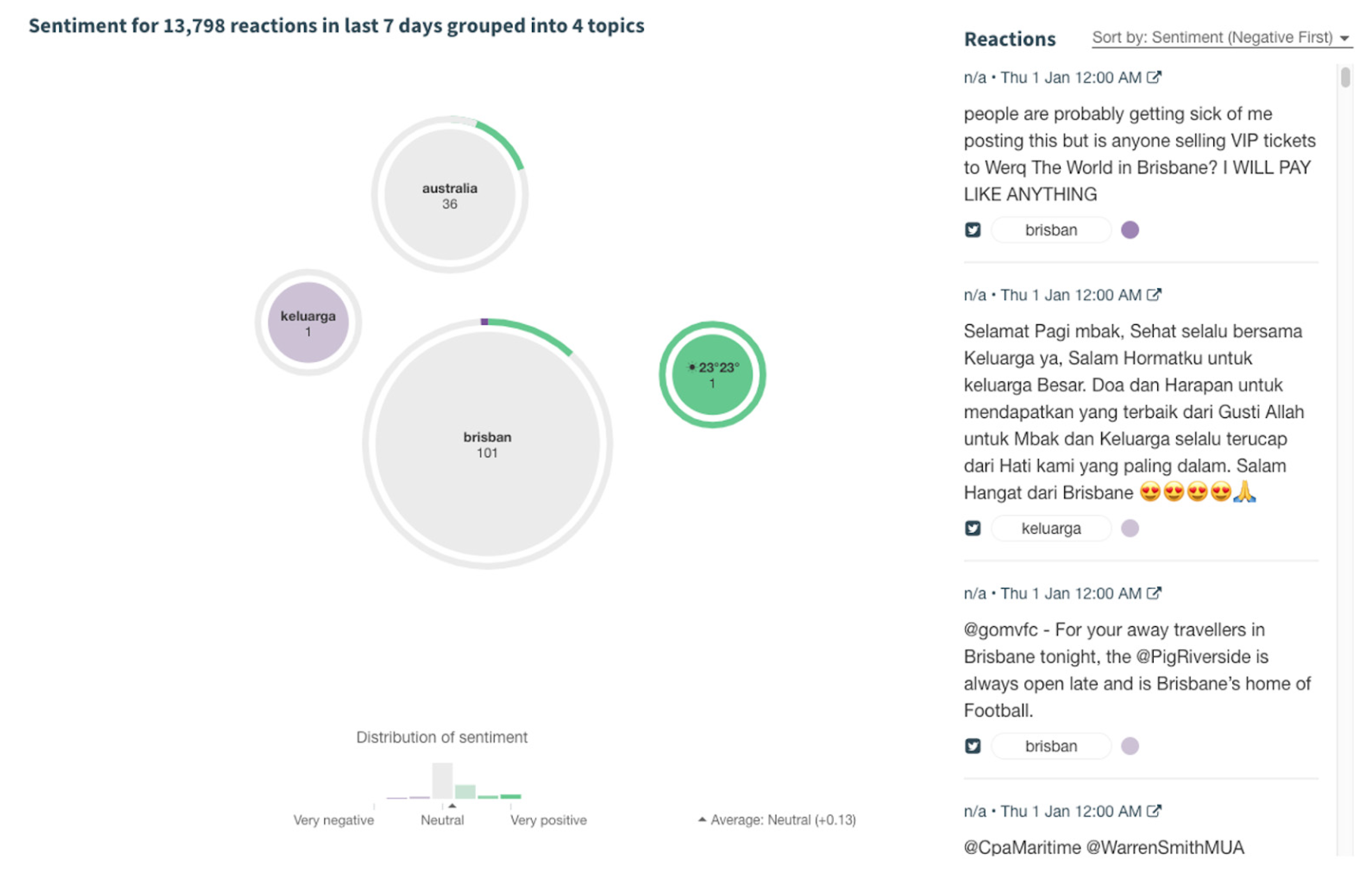

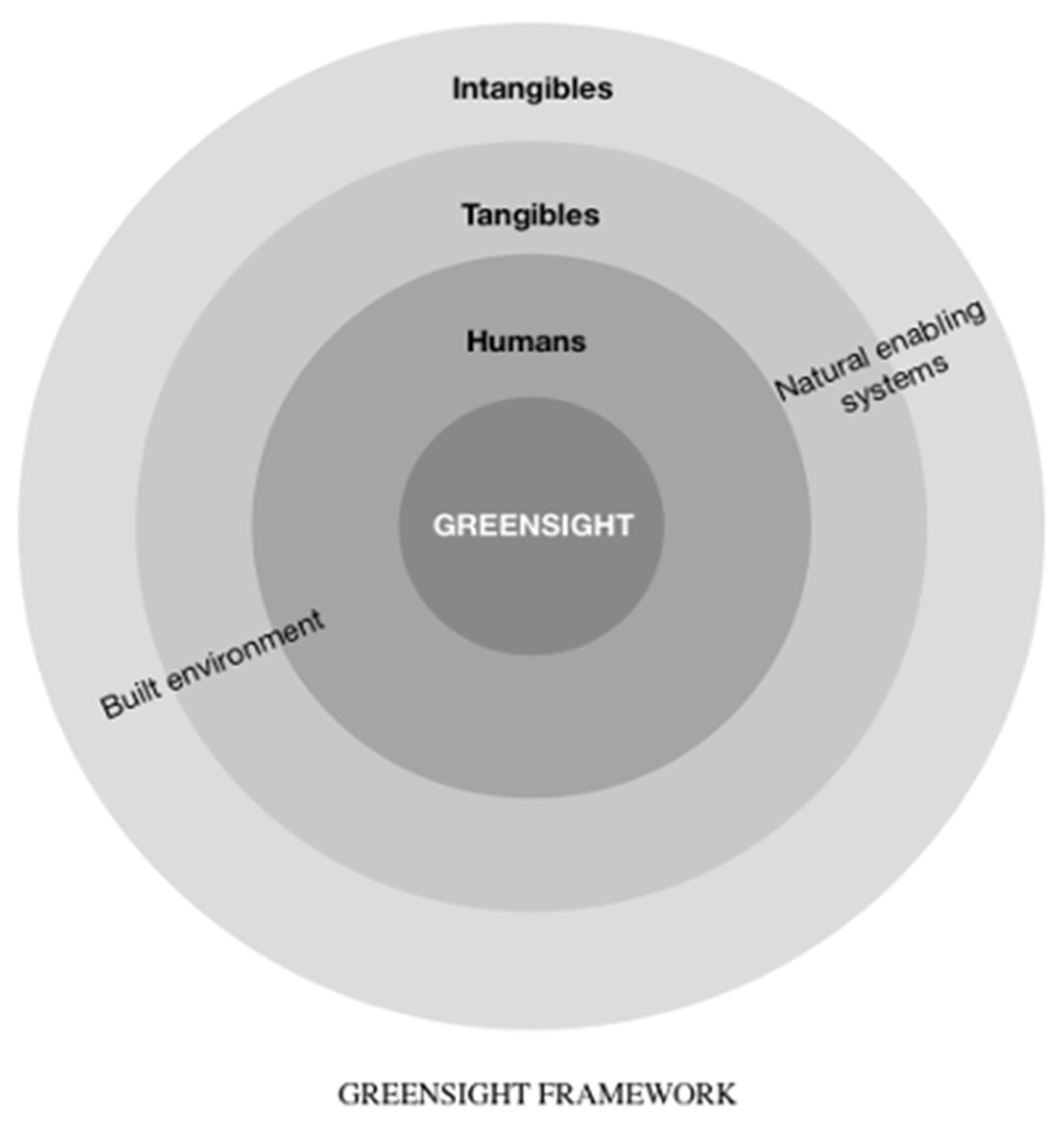
| Project Name, Location, Status | Project Leaders, Stakeholders and Intended Audiences | Project Description | Project Aims | How Smart City Is Defined in This Project | ||
|---|---|---|---|---|---|---|
| 3.1-Living Labs | ||||||
| A-Solid Waste Management, Finland Ongoing Project | LUT University CroBoDDIT project University, municipality, residents and businesses | A living lab approach was piloted to improve recycling practices on a university campus. The goals were to understand how to improve recycling by staff and students, and how to achieve living lab principles of openness, empowerment of users and realism. Methods included surveys, interviews, and a co-design workshop. |
| “Smartness” may lie in the capacity of empowered citizens to understand and frame the solutions that have the most impact for them, whether or not they are technology-driven. | ||
| B-Sustainability Means Inclusivity (SuMIn), Sweden 2020–2022 | Linköping University Researchers: ethnographers, engineers, and designers MSc Design students Feedback: municipal representatives Intended user group: diverse inhabitants who engage with Kungsgatan on a daily basis (e.g., residents, shop owners, municipal actors) | The project aimed at engaging citizens, technical developers and other stakeholders in a series of Living Labs in Norrköping, Sweden. The research team used cultural probes to create dialogue with citizens and involve them in the living lab where possible futures for a smart and sustainable Kungsgatan were explored together with researchers and municipal actors. The resulting future visions were used in a backcasting process to prepare briefs for prototyping data-driven public services based on the current testbed technology. |
| A space where inclusivity and citizen engagement determine whether a smart city solution is adopted in the long term. | ||
| C-SimpliCITY, Austria and Sweden 2020–2021 | Salzburg Research Project partners: 1 company, 2 city administrations, 1 university, 2 research organisations Audiences: citizens of Salzburg and Uppsala Assessment: company developing the platform and research partners | Co-creation activities in Salzburg and Uppsala led to two urban platforms that aggregate local sustainability services, engage citizens and empower changes related to mobility and consumption. |
| A balanced concept, comprising sustainability, technological innovation, a human-centred approach and a consideration for economic value. | ||
| 3.2-City-Public Interfaces | ||||||
| D-Smart Kalasatama and Oodi Library, Finland Ongoing Project | Aalto University Stakeholders: Forum Virium Helsinki facilitators, Kalasatama residents, companies experimenting with smart solutions in Kalasatama, Oodi Library staff and visitors | Aalto University researchers studied how city employees act as intermediaries, encourage citizen participation and facilitate the development of a smart city in two initiatives: Smart Kalasatama, a smart city project and testbed neighbourhood for companies that want to experiment with smart solutions for sustainable urban living, and Oodi, the Helsinki Central Library. |
| For Smart Kalasatama, development efforts focus on three areas of smartness - energy, mobility and living - with an overall aim of promoting smart economy. At Oodi Library, smart city development efforts primarily focus on the advancement of social and human capital with the aim of promoting citizen participation in public life. | ||
| E-The Building City Dashboards (BCD) Project, Ireland Completed Project | Maynooth University Project partners: Dublin City Council, Fingal County Council, Cork City Council and Cork County Council, as well as Dublinked, Ordnance Survey Ireland and the Central Statistics Office | Two cities were used as living labs to create two public-facing, functioning, open-data-driven smart city dashboards that aid cities to (a) become better informed and more effective in decision-making and planning through visual analytics, data analytics and new multimedia tools; and (b) improve data management, data practices and data literacy within stakeholder organisations. |
| Data-driven urban management and governance. | ||
| F-Citizen Voices in Cities (CiViC) Dashboard, Australia Prototype | University of Sydney Project partners: two local authorities in the greater Sydney area and Brisbane | The project generated a proof-of-concept web platform that mines social media posts and offers search features and aggregated visualisations. The dashboard is intended to support city authorities to understand current issues in local communities and assess the long-term impact of development projects. |
| This project focused on “smart governance” of smart citiy initiatives, which relates to “using CS/IT to improve democratic processes and public services (e-government) and to support and facilitate better planning and decision making” (Camero & Alba, 2019, p. 86). | ||
| 3.3-Forecasting | ||||||
| G-Roosevelt Island’s Digital Twin for Social Impact, USA Proof of Concept Prototype | Cornell Tech Audiences: planners, developers, municipalities, public | The digital twin combines a 3D model with socio-economic data and demographic information. The data-driven microsimulation is based on historic urban research with data sources including: the American Community Survey, the neighborhood master plan, privatization agreements and resident interviews. |
| Digital simulation of a city based on multiple datasets and urban sources to understand and predict social impacts of development. | ||
| H-Greensight: Scale-Up Perspectives in Urban Green for Human Centered and Livable Urban Cores, Finland Conceptual Project 2017–2019 | Finland Futures Research Centre, University of Turku Project partner: City of Turku | This interdisciplinary project used futures and foresight methods to find alternatives to two of Turku’s main urban challenges: spatial fragmentation and low human centeredness. The concept of Greensight explores natural enabling systems within the construction of alternative futures and explores the role that planning and technology play in those futures. |
| The smart city as a future imaginary where the reconciliation of pressing social issues with urban technology development must be re-thought. | ||
| Project Name, Location | Project’s Human-Centred Approach | Connection to Environmental Sustainability | Project Evalua-tion | Methods of Project Assessment | Proposed Social Impact Indicators | Possible Social Impacts |
| 3.1-Living Labs (continued) | ||||||
| A-Solid Waste Manage-ment, Finland | This project used living lab principles to plan a smart city project, thereby emphasizing diversity, inclusivity and choice in a design process that leads to real outcomes that were envisioned by participants and will benefit wider society. |
| Formative evaluation of project | Framework mapping living lab principles to co-design stages | Achievement of living lab principles:
|
|
| B-Sustainability Means Inclusivity (SuMIn), Sweden | This project engages citizens as active participants in the early-stage design and development of smart city technology. It creates inclusive and democratic shared social space, emphasizing different generations, from young adults to elderly people. |
| Formative evaluation of project |
|
| A more inclusive and sustainable Kungsgatan based on:
|
| C-SimpliCITY, Austria and Sweden | While sustainability has been a key focus of smart city strategies in both Salzburg and Uppsala, the human-centred aspect was not substantially integrated in previous initiatives. The platforms adressed the optimisation of digital tools for city administration; increased visibility of services and easier access to local offers for citizens. It emphasizes a range of stakeholders through codesign, and incorporates learnings about how stakeholders value what they learned through the project (e.g. building trust, increased collaboration, better understanding of smart city goals). |
| Formative and summative evaluation of the project |
|
|
|
| 3.2-City-Public Interfaces (continued) | ||||||
| D-Smart Kalasatama and Oodi Library, Finland | The research examines how city employees strive to improve citizen engagement and inclusion in smart city initiatives by providing opportunities for participation, bringing different actors together, negotiatinig between them and adapting technologies and services for different needs. | Helsinki city strategy and the studied initiatives include sustainability goals but they have not been analysed in this project | Summative evaluation of project’s social impact |
|
|
|
| E-The Building City Dashboards (BCD) Project, Ireland | The project adopted a human-centred approach to smart city systems to balance the needs off citizens and city administrators. It focused on the user’s overall holistic experience with dashboard systems, acknowledging users’ diversity and using qualitative research to develop design ideas that addressed different user requirements and cognitive styles. | Formative evaluation of project |
|
|
| |
| F-Citizen Voices in Cities (CiViC) Dashboard, Australia | The project sought to augment existing community engagement activities, which form an essential component of all new city development in Australia, not just smart city development. The project proposed smarter ways of using existing data to capture citizens’ voices, rather than driving top-down, technological smart city solutions. | Formative evaluation of the project |
|
|
| |
| 3.3-Forecasting (Continued) | ||||||
| G-Roosevelt Island’s Digital Twin for Social Impact, USA | This digital twin shifts attention from the built environment to the invisible social impacts of gentrification and privatisation. It shows changes in demographics and affordable housing over the past 45 years and projects 50 years into the future. |
|
| |||
| H-Greensight: Scale-Up Perspectives in Urban Green for Human Centered and Livable Urban Cores, Finland | Greensight applies a multi perspective approach. It seeks to examine the many layers of life, the human and non-human ones, to explore impacts, deficiencies and their critical role in understanding social change. As technology and digitalization continue to expand, nature relations need further consideration as an important counterbalancing factor for achieving human centricity. |
| Proposed framework for envision-ing alternative futures |
|
|
|
Disclaimer/Publisher’s Note: The statements, opinions and data contained in all publications are solely those of the individual author(s) and contributor(s) and not of MDPI and/or the editor(s). MDPI and/or the editor(s) disclaim responsibility for any injury to people or property resulting from any ideas, methods, instructions or products referred to in the content. |
© 2023 by the authors. Licensee MDPI, Basel, Switzerland. This article is an open access article distributed under the terms and conditions of the Creative Commons Attribution (CC BY) license (https://creativecommons.org/licenses/by/4.0/).
Share and Cite
Hodson, E.; Vainio, T.; Sayún, M.N.; Tomitsch, M.; Jones, A.; Jalonen, M.; Börütecene, A.; Hasan, M.T.; Paraschivoiu, I.; Wolff, A.; et al. Evaluating Social Impact of Smart City Technologies and Services: Methods, Challenges, Future Directions. Multimodal Technol. Interact. 2023, 7, 33. https://doi.org/10.3390/mti7030033
Hodson E, Vainio T, Sayún MN, Tomitsch M, Jones A, Jalonen M, Börütecene A, Hasan MT, Paraschivoiu I, Wolff A, et al. Evaluating Social Impact of Smart City Technologies and Services: Methods, Challenges, Future Directions. Multimodal Technologies and Interaction. 2023; 7(3):33. https://doi.org/10.3390/mti7030033
Chicago/Turabian StyleHodson, Elise, Teija Vainio, Michel Nader Sayún, Martin Tomitsch, Ana Jones, Meri Jalonen, Ahmet Börütecene, Md Tanvir Hasan, Irina Paraschivoiu, Annika Wolff, and et al. 2023. "Evaluating Social Impact of Smart City Technologies and Services: Methods, Challenges, Future Directions" Multimodal Technologies and Interaction 7, no. 3: 33. https://doi.org/10.3390/mti7030033
APA StyleHodson, E., Vainio, T., Sayún, M. N., Tomitsch, M., Jones, A., Jalonen, M., Börütecene, A., Hasan, M. T., Paraschivoiu, I., Wolff, A., Yavo-Ayalon, S., Yli-Kauhaluoma, S., & Young, G. W. (2023). Evaluating Social Impact of Smart City Technologies and Services: Methods, Challenges, Future Directions. Multimodal Technologies and Interaction, 7(3), 33. https://doi.org/10.3390/mti7030033






